CO2 Monitor
This project uses an Arduino Uno R4 WiFi and a K30 CO₂ sensor powered by a 5–9W solar panel to monitor live CO₂ levels. Data is uploaded to a custom HTML webpage, enabling real-time environmental tracking. The system is designed to be scalable, with each V2 unit costing around $100 with solar power and $50 for the plug-in version.
Created by
![]() Ethan
Ethan
Tier 1
43 views
0 followers
Timeline
![]() Ethan
submitted CO2 Monitor for review ago
Ethan
submitted CO2 Monitor for review ago
![]() Ethan
added to the journal ago
Ethan
added to the journal ago
8 DAYS!!!
After 8 Days, the battery on the CO2 sensor has run out. This is amazing, meaning that the required amount of electricity to run this is even less than I originally projected. This system will run on a 0.5W solar panel even if the PSH (Peak Sunlight Hours) is less than 0.44 (Portland DEC average).

![]() Ethan
submitted CO2 Monitor for review ago
Ethan
submitted CO2 Monitor for review ago
![]() Ethan
added to the journal ago
Ethan
added to the journal ago
V2 Power Testing
V2 lasted over 8 days with my 3,000mAh battery, the new completed versions are available on the bom.csv, and testing is here:
https://docs.google.com/spreadsheets/d/1OSbstzvjz7s5CB3NxSavfzaJNBi-WGXtTkY0dT4uzXY/edit?gid=0#gid=0
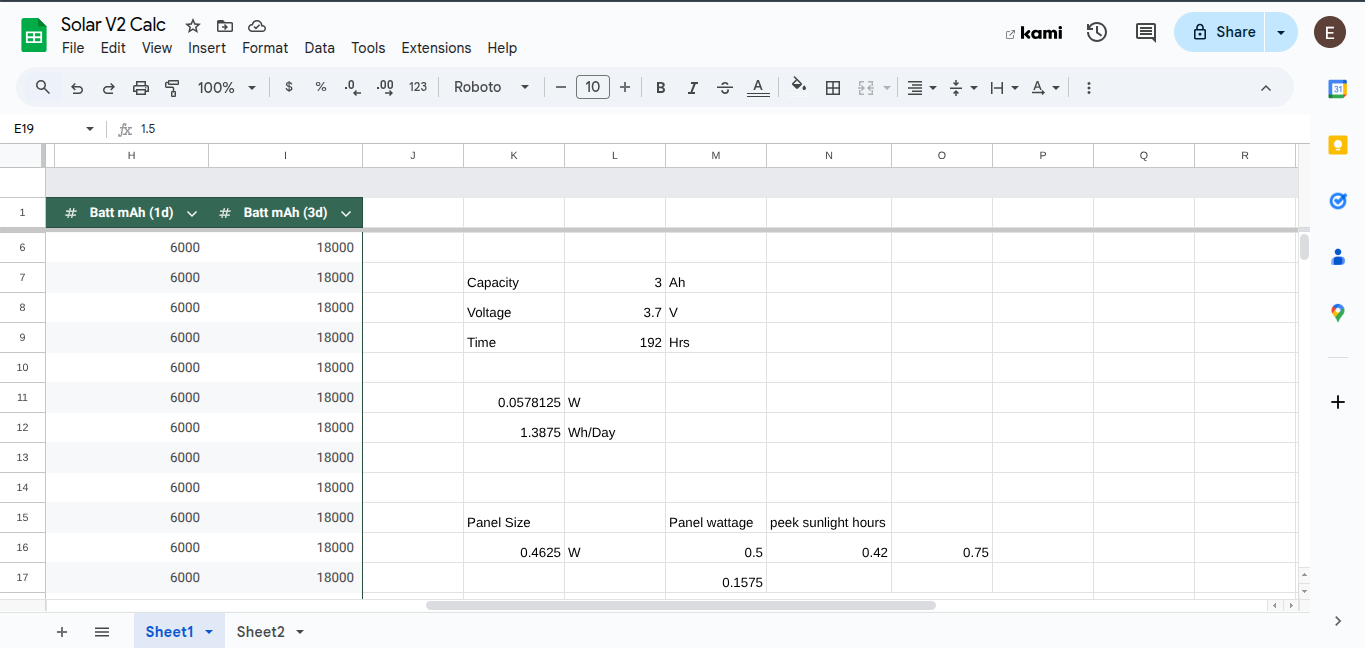
![]() Ethan
added to the journal ago
Ethan
added to the journal ago
V1 Solar Calcultions
The calculations for solar panels and battery requirements for the device V1.
The power consumption calculations for V2 are coming soon, and Solar calculations will follow
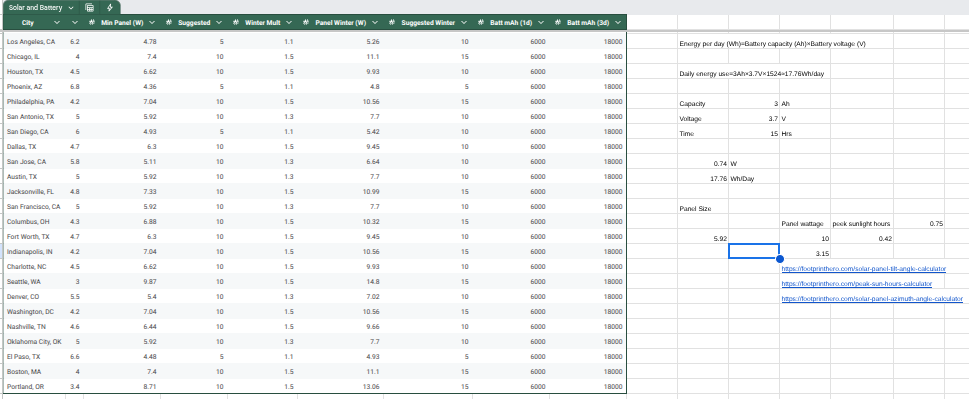
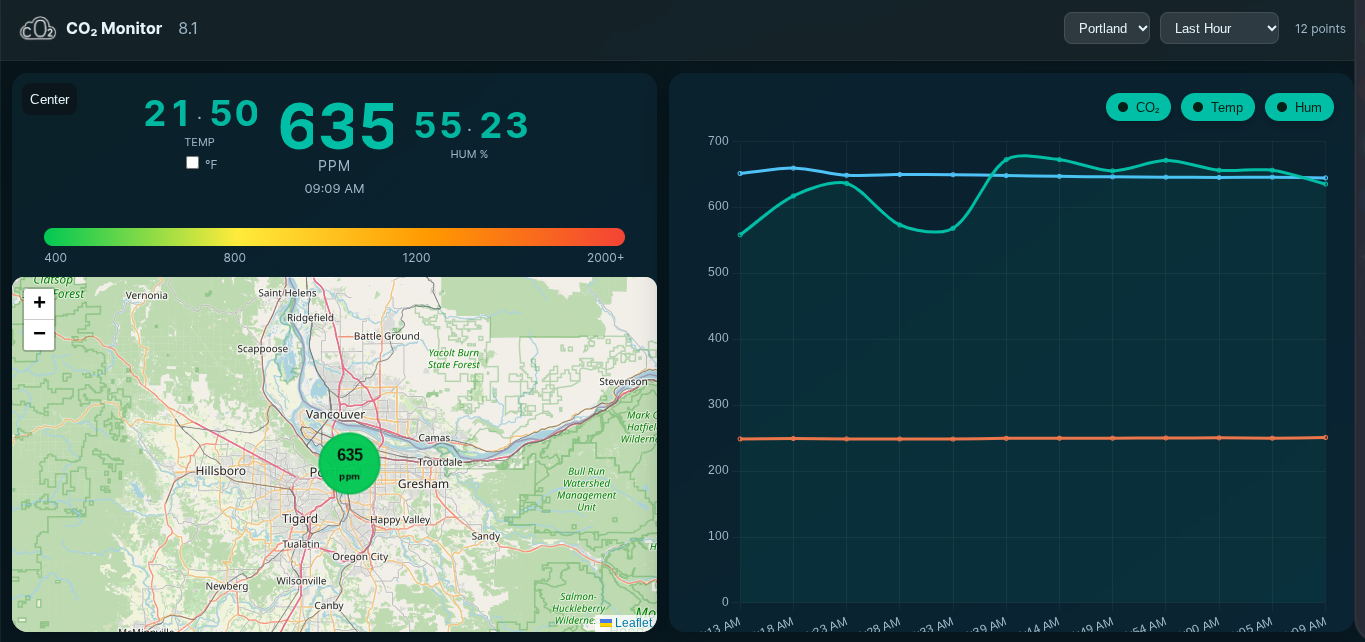
![]() CAN ⚡🚀
submitted CO2 Monitor for review ago
CAN ⚡🚀
submitted CO2 Monitor for review ago
![]() CAN ⚡🚀
submitted CO2 Monitor for review ago
CAN ⚡🚀
submitted CO2 Monitor for review ago
![]() Ethan
added to the journal ago
Ethan
added to the journal ago
Soldering
I spent an hour relearning to solder and successfully soldering the new sensor ti its header pins.
Now im working on the improved html to display other kinds of weather information thats ready be the sensor.
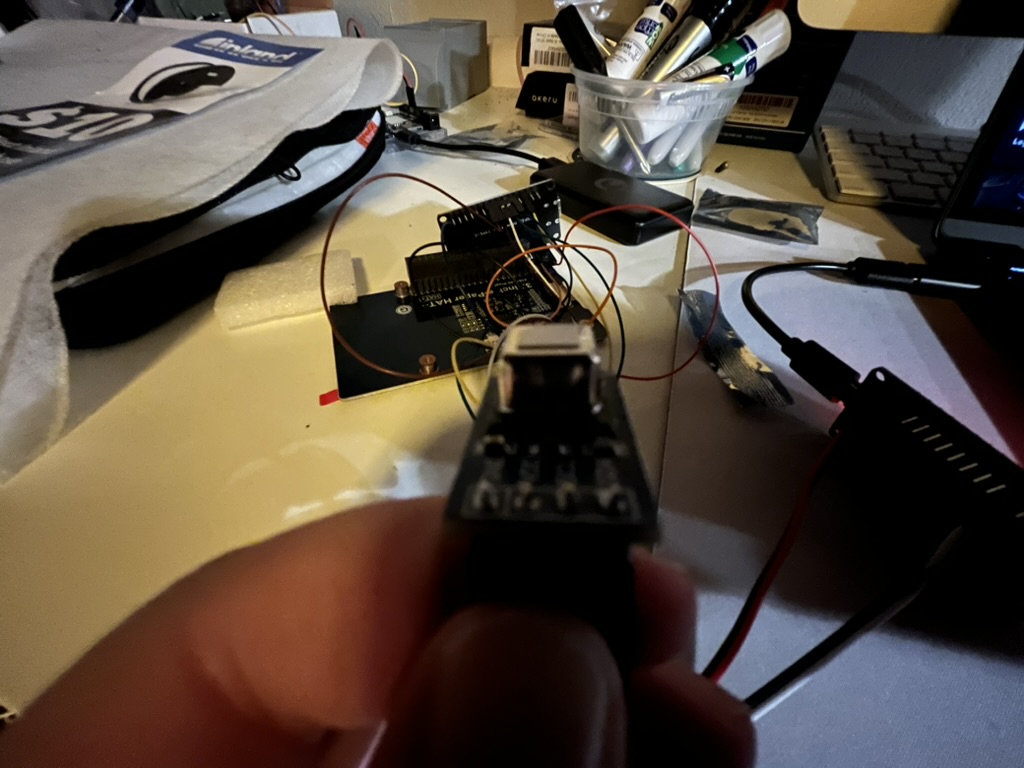
![]() Ethan
added to the journal ago
Ethan
added to the journal ago
Working System V2
any live data you see on https://co2-cloud.web.app/ has ben tarnsmitted by the new device!
the device also is transmitting humidity and tempreture wich will come to the html site soon
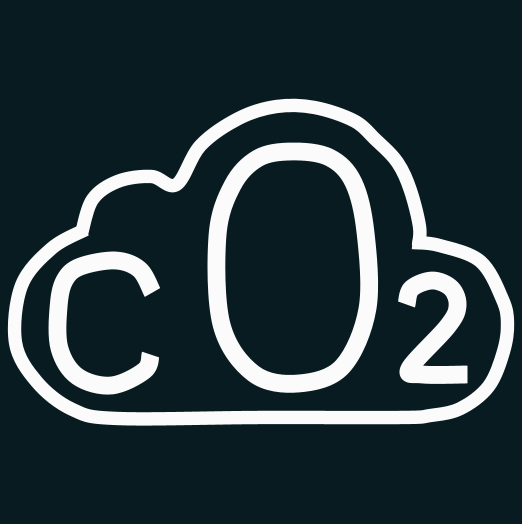
![]() Ethan
added to the journal ago
Ethan
added to the journal ago
Cheaper Version Is here
I've been working on this for a bit.
the new device uses a ESP32 devbord and a SCD4X OR SCD30 series co2 sensor (works with any)!!!
Testing is underway.

![]() Ethan
submitted CO2 Monitor for review ago
Ethan
submitted CO2 Monitor for review ago
![]() Ethan
added to the journal ago
Ethan
added to the journal ago
PDF IS HERE
🌿 CO₂ Monitor Assembly and Setup Guide 3.1
This is the final setup for this project, thank you for reading
Im done yay

![]() Ethan
added to the journal ago
Ethan
added to the journal ago
Updated Repository, Created Instructions PDF
ive spent a while going through everything developing instructions for anyone to follow from start to finish with any version of this device. the finished pdf will be available soon
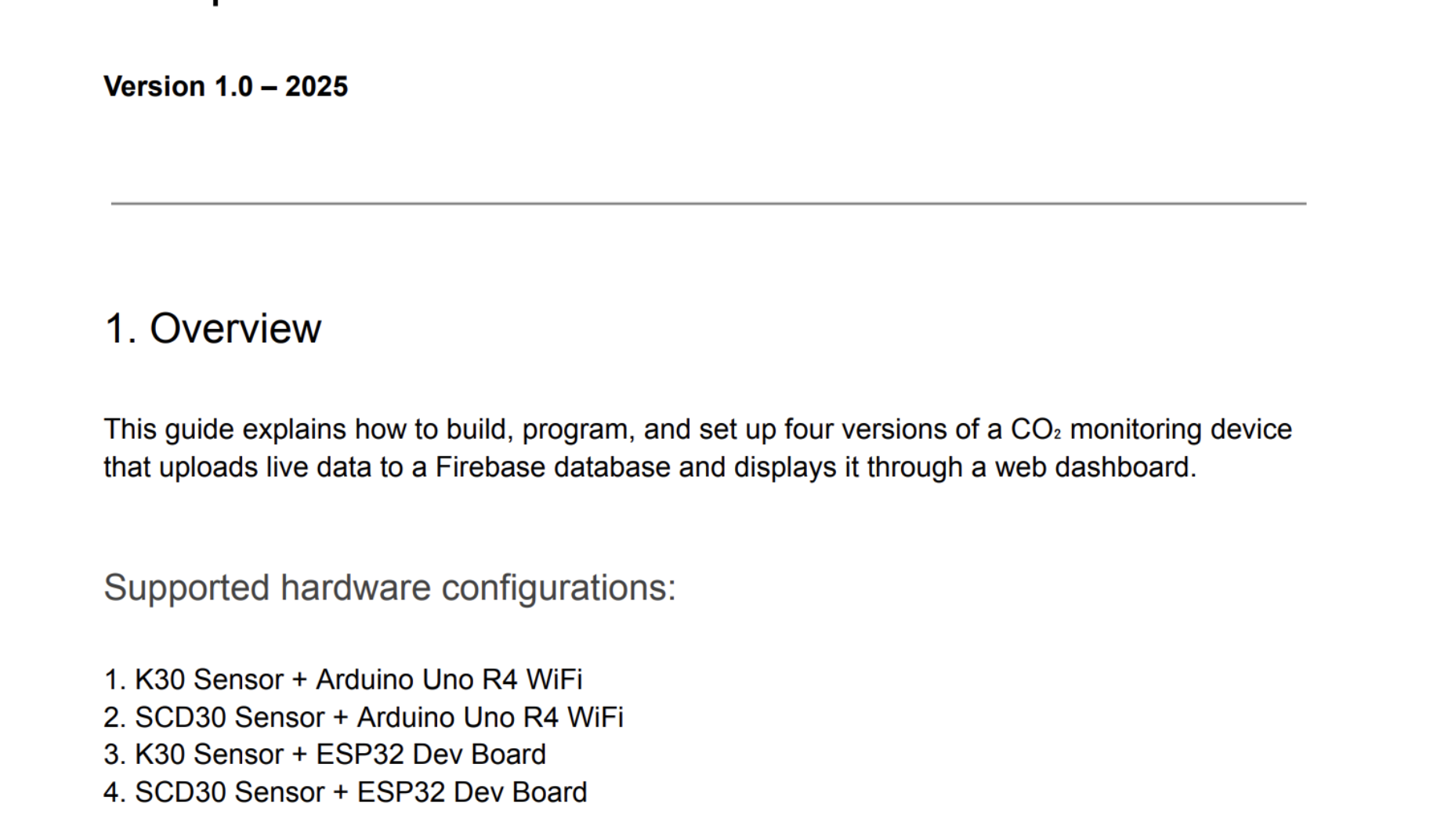
![]() Ethan
added to the journal ago
Ethan
added to the journal ago
Reducing Cost
Looking for cheaper components to reduce cost, probably using an ESP32-WROOM and a Sensirion CO2 sensor that also measures humidity and temperature.
estimates savings: > $70
New Device Total: $50 Plug in | $120 Solar

![]() Ethan
added to the journal ago
Ethan
added to the journal ago
Long Term Testing and Web App Redesign
I've completely redone the web app to make it look nicer and load more efficiently. In addition, after a week or so of testing, I've optimized the Firebase database rules to improve security.
Other updates include auto-excluding negative numbers and working on a fix for unusually high readings.
Added animations to make the site feel more polished: rotating number scroller, pulsing map particles, and smooth data point transitions.
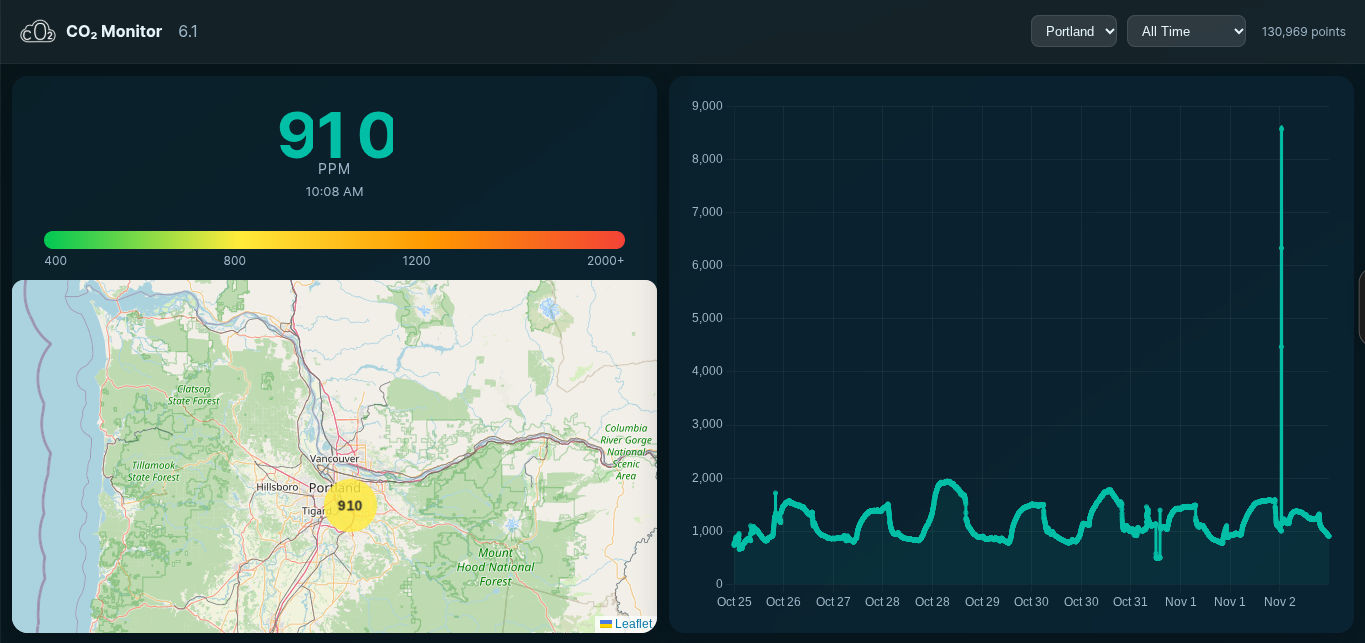
![]() PenguinBoyMo
gave kudos to CO2 Monitor ago
PenguinBoyMo
gave kudos to CO2 Monitor ago
This project is very cool I can't wait to see what you add next!
![]() Ethan
added to the journal ago
Ethan
added to the journal ago
3D Printed case
It looks okay. I'm going to try to make it better and easier to print without supports. Let me know if you have any ideas. I'm also going to make multiple versions to suit all of the types of power sources.
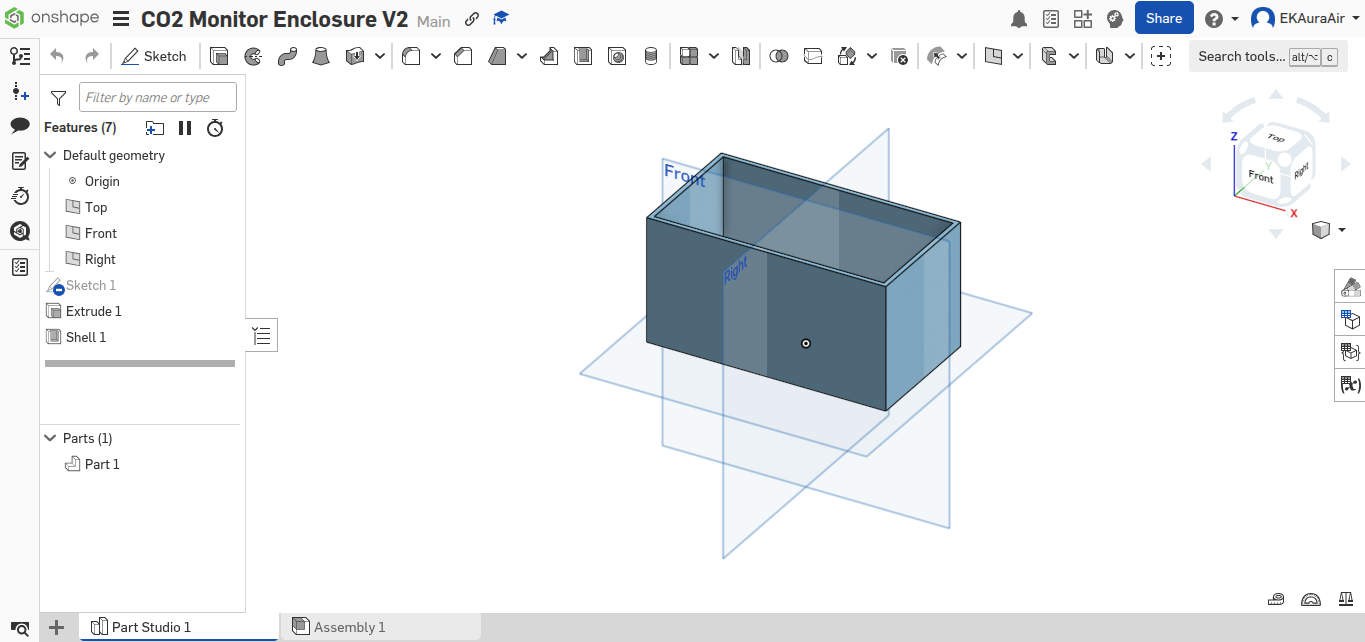
![]() Ethan
added to the journal ago
Ethan
added to the journal ago
Web App Updates
I've updated the web app with a new color scheme, a more accurate graph, and a map; however, I'm still experiencing issues with the CO2 sensor reading -1 ppm.
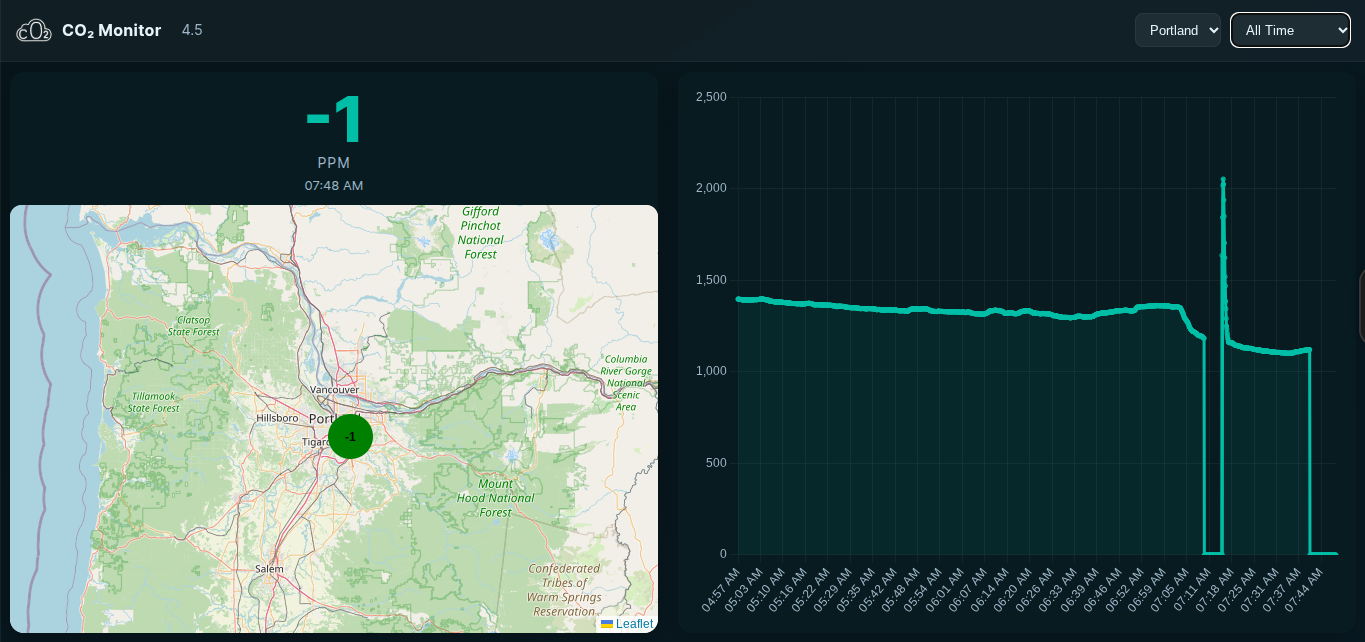
![]() CAN ⚡🚀
approved CO2 Monitor ago
CAN ⚡🚀
approved CO2 Monitor ago
Tickets awarded: 400 tickets
![]() Ethan
submitted CO2 Monitor for review ago
Ethan
submitted CO2 Monitor for review ago
![]() Ethan
added to the journal ago
Ethan
added to the journal ago
Bug Fixing
Fixed a bug involving the rendering of the graph in some desktop formats.
Fixed a bug involving the incorrect reading of CO2 after the website was reloaded repeatedly
Fixed a bug where older versions of Chrome would repeatedly crash after opening the page and selecting an alternate time frame.
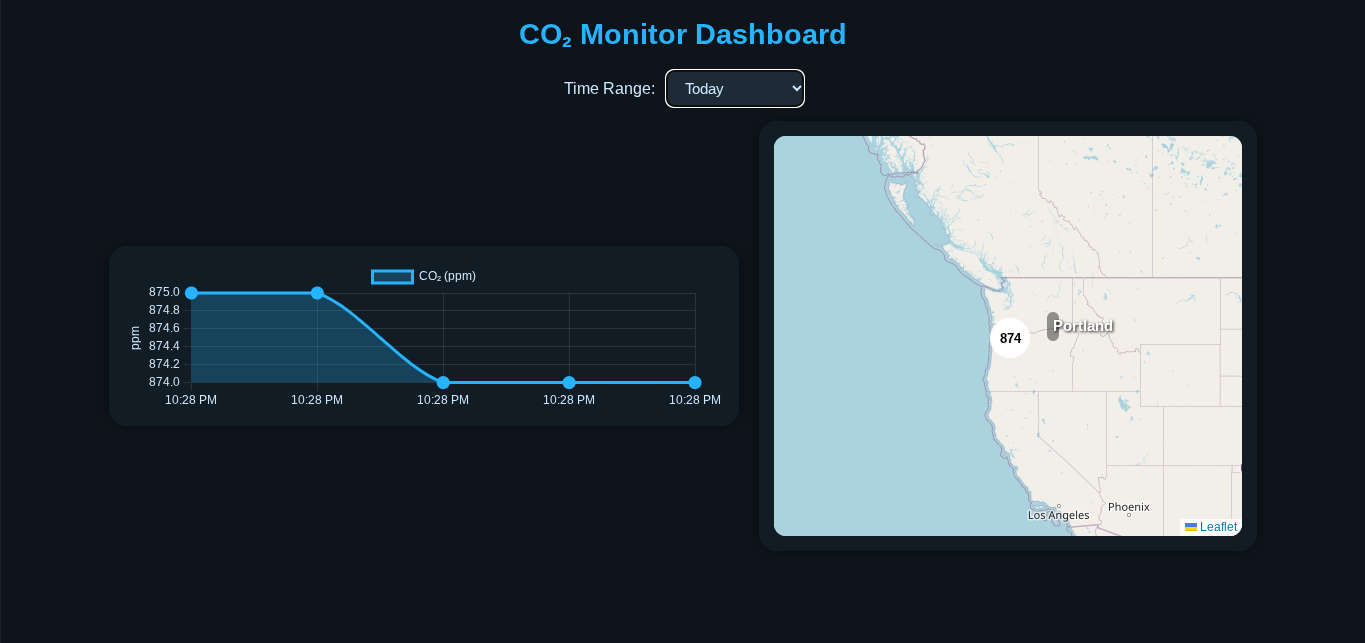
![]() Ethan
added to the journal ago
Ethan
added to the journal ago
Fixed Dashbord?
After resetting the device and checking the error codes I did not see anything that would have caused this, I reset the device and its working normally now, I'm going to remove the bad data from the database so future calculations and things are not affected, also working on fixing a bug where a mobile display of the web app used mobile graph sizes and an other bug where the colored dot is not correctly displayed on the map when viewed in fullscreen.
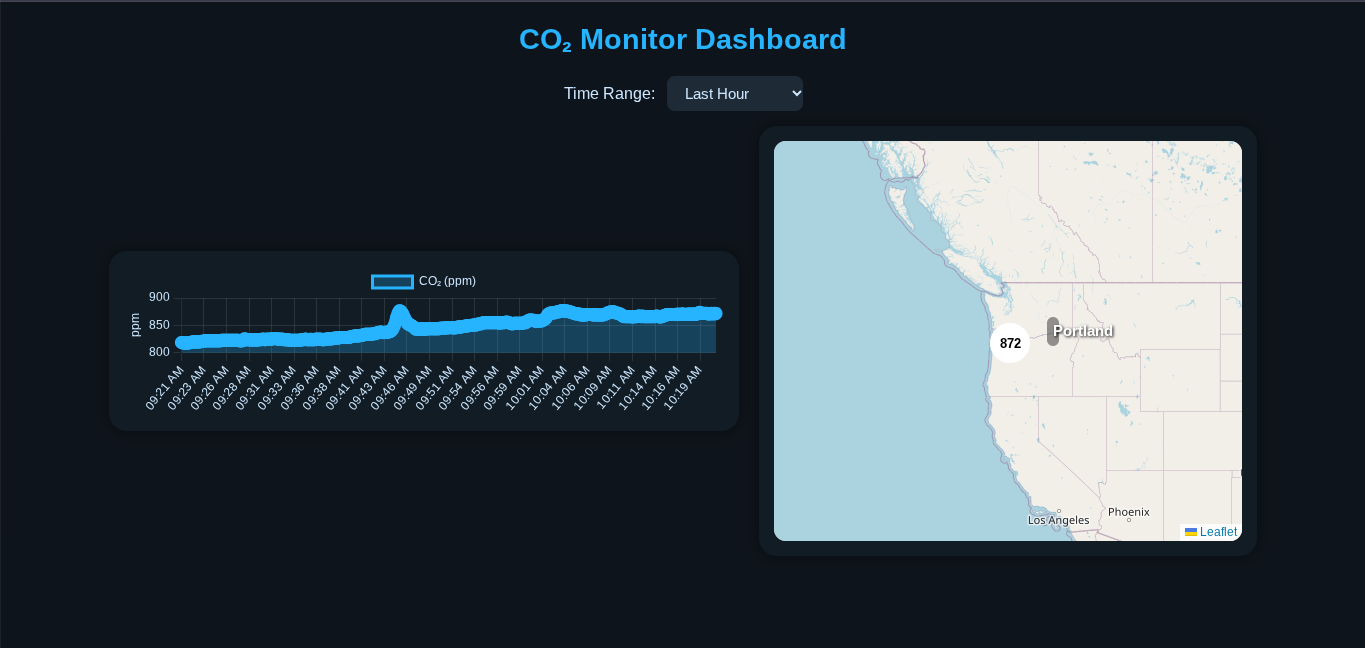
![]() Ethan
added to the journal ago
Ethan
added to the journal ago
Assembling the Enclosure
A few YouTube videos later and I've made the top of the box slide in the hole it belongs in, only issue is how to print it with the least amount of supports
I may also flip the whole thing to make it more waterproof having the door/access panel on the bottom so the electronics cant get flooded.

![]() Ethan
added to the journal ago
Ethan
added to the journal ago
That Cant Be Good
I woke up this morning to find that my updated code from the previous night had caused an error where the HTML web page was reading over 50,000 ppm "that cant be right" is thought to myself. Anyway I reset the device and that seemed to fix it will check the error log and firebase data

![]() Ethan
added to the journal ago
Ethan
added to the journal ago
3D printed enclosure
began working on the enclosure to house the electronics, the plan is to print these with pla and spay paint them with a clear coat to make them water tight
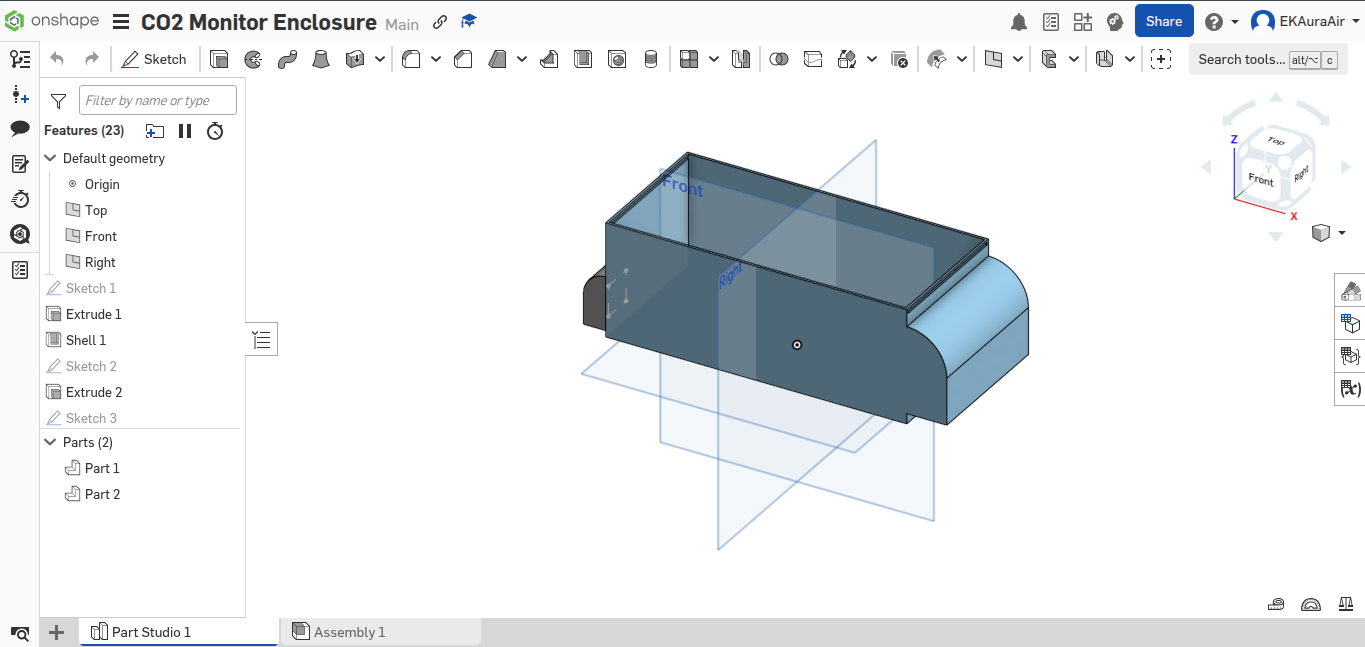
trying to figure out the best way to do this having no experience with onshape but determined to learn cad
![]() Ethan
added to the journal ago
Ethan
added to the journal ago
UPDATED bom.csv
I updated the bom.csv to look nice and have tax, I also live in Oregon (where there is no sales tax) so I included an option that does not include tax, the updated values and calculations are in the latest GitHub repository linked at the header of this page.
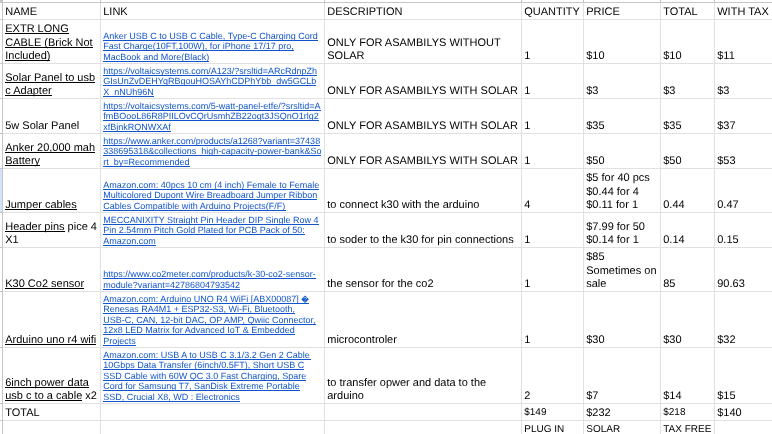
![]() Ethan
added to the journal ago
Ethan
added to the journal ago
VIEW MY PROJECT
IM LIVE
my sensor shuld be live right now check this link
if you dont see anything than my arduino is probably going through a midlife crisis however if you select the all time option you can see past datapoints
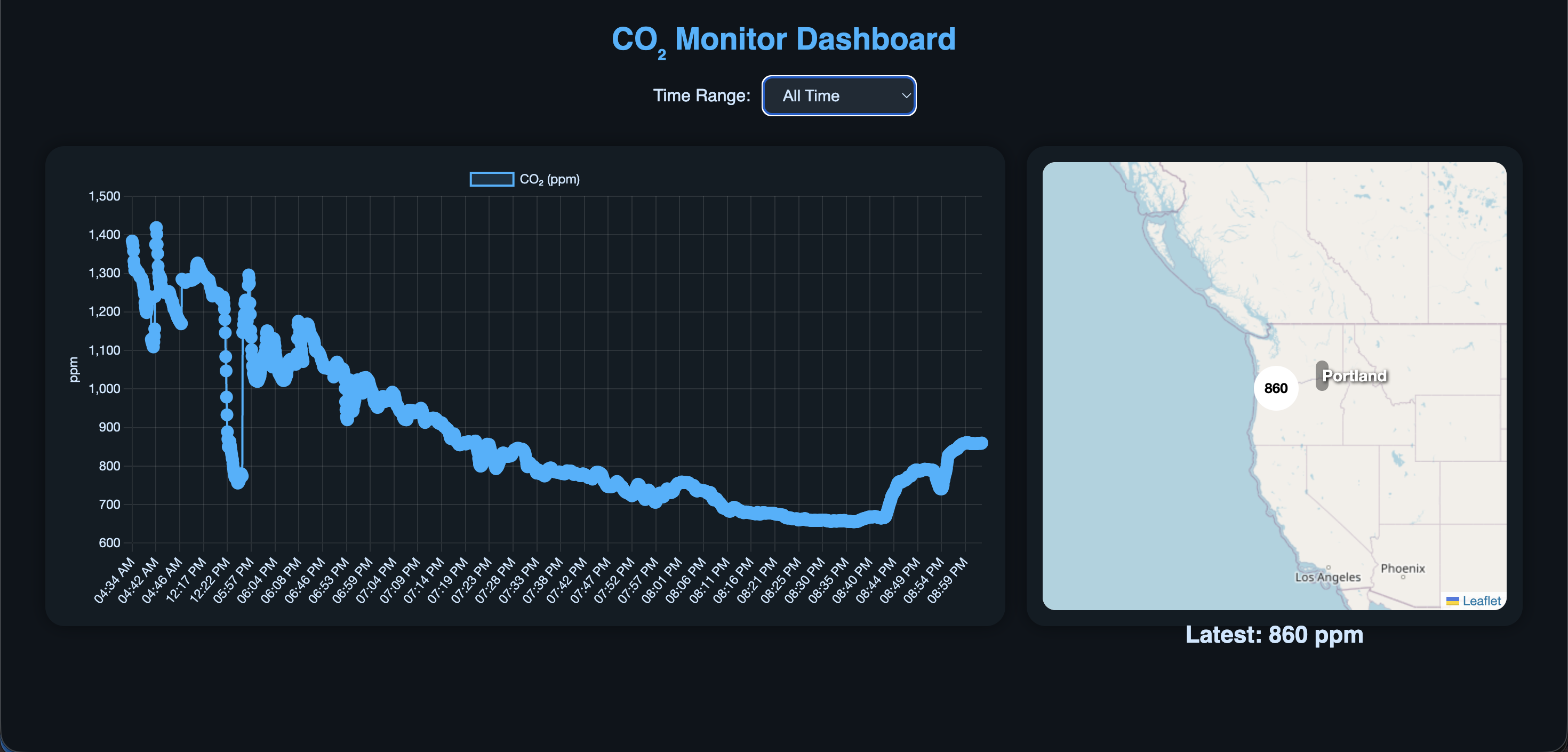
finally got this live after firebase decided my security was not up to par, oh well
![]() Ethan
added to the journal ago
Ethan
added to the journal ago
Iphone web app on home screen tutorial
To add the web app to your iphones home screen:
at the bottom of the page in sefari click the 3 dots
click share
scroll down to add to home screen
the app icon shuld apper along with the default name
click done
view on your home screen
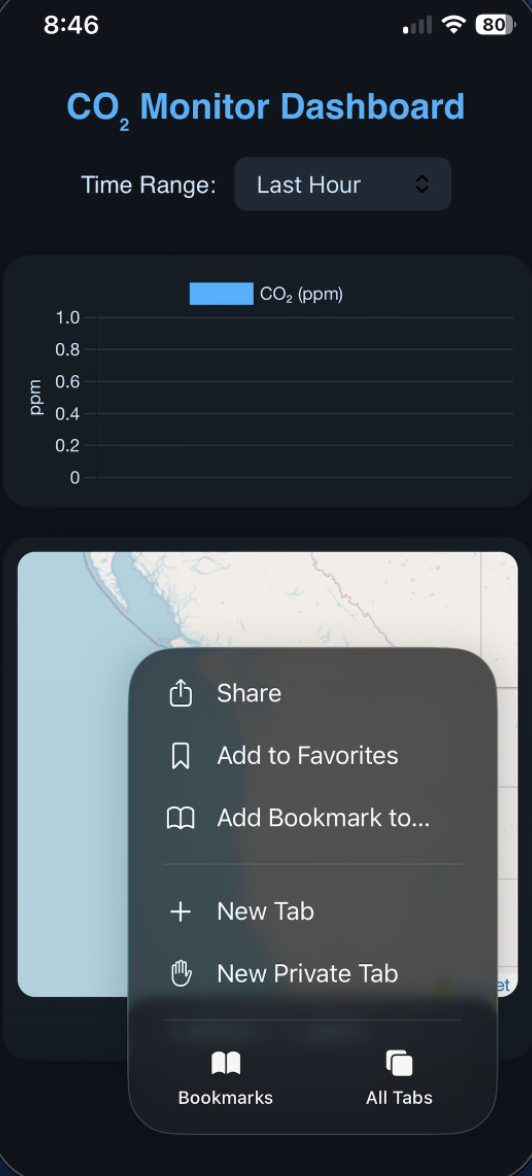
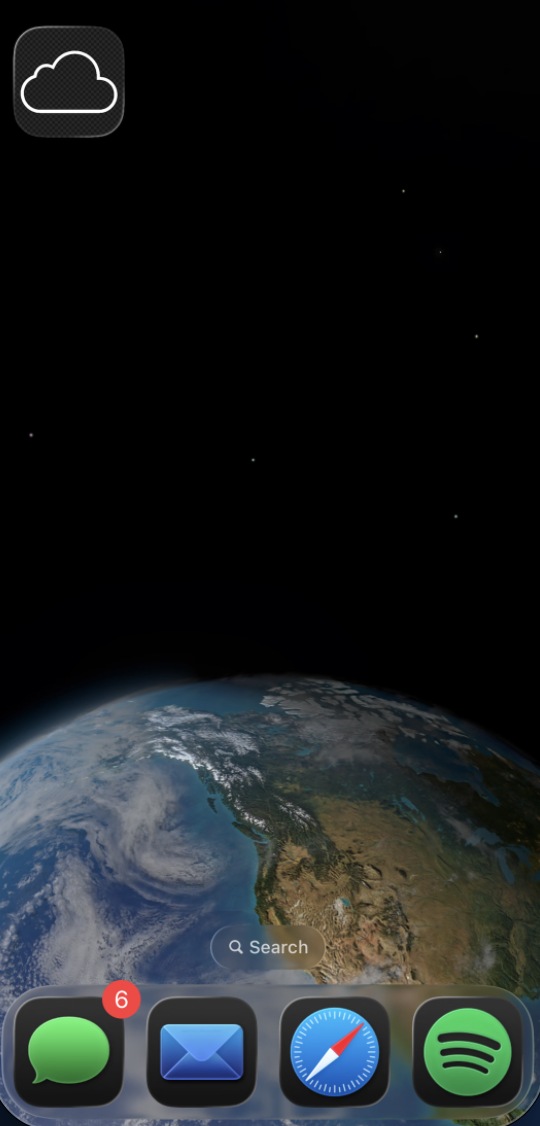
![]() Ethan
added to the journal ago
Ethan
added to the journal ago
Bug fix
fixed a bug whare when the web app was deployed from safari on iphone the map would not load correctly has ben updated in the latest GitHub repository
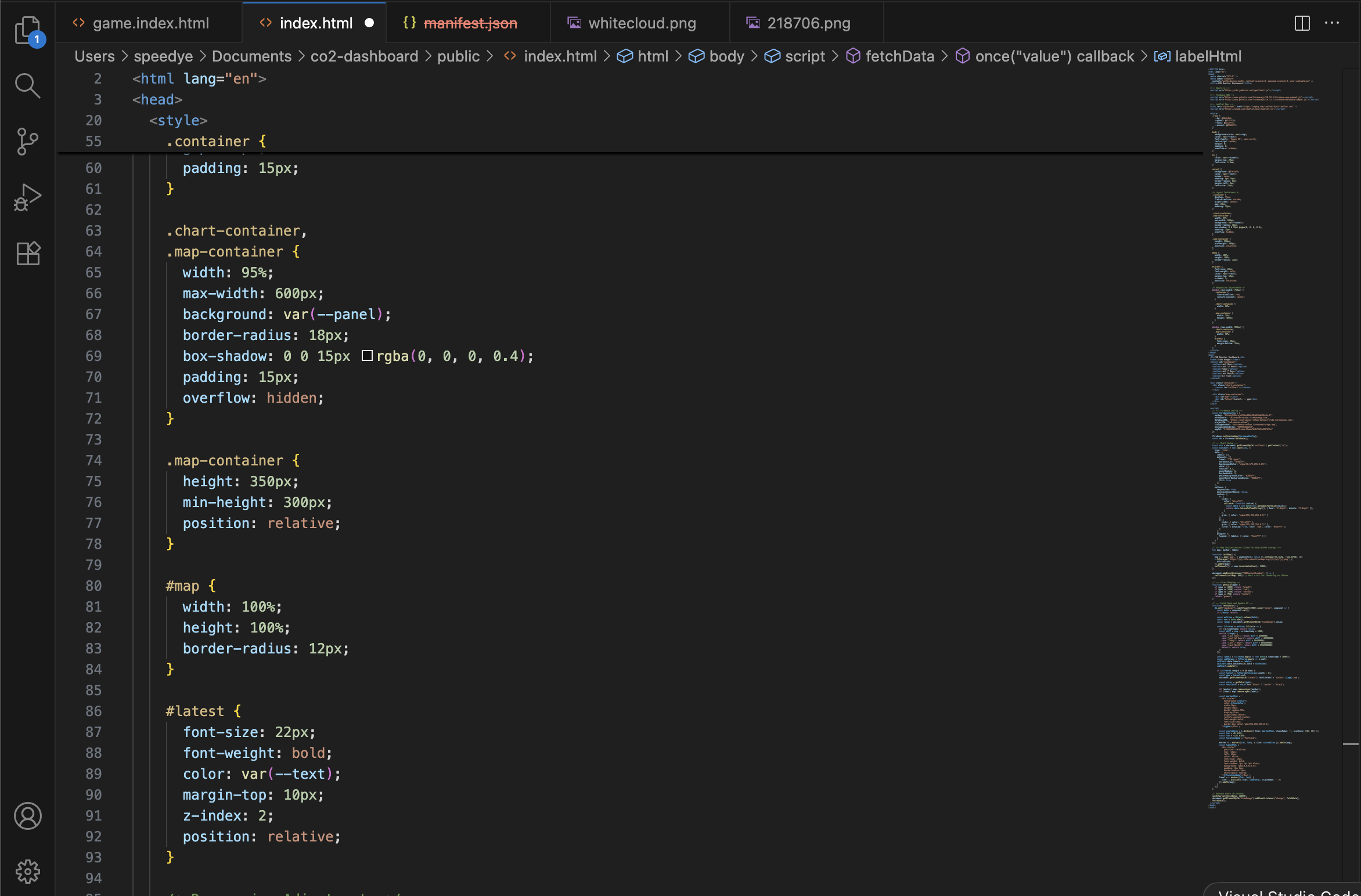
![]() Ethan
added to the journal ago
Ethan
added to the journal ago
BETER CODE IS HERE
there's more better code if you have some of the newer Arduino boards or plan to use an esp instead this code should work.
and of course I forgot to remove my API key so had to change that opsie
every line of this code has been tested and works but there's more on the horizon

took me a minute to get this done tho
![]() Ethan
added to the journal ago
Ethan
added to the journal ago
MORE BUGS :(
Getting Firebase and GitHub Pages to work together for real-time CO₂ updates was easily one of the most challenging parts yet. I ran into a ton of bugs along the way — everything from failed database writes to JavaScript fetch errors. Early on, Firebase kept throwing permission-denied errors because my database rules weren’t configured correctly, which prevented the Arduino from posting data. I also had to debug SSL and certificate issues when sending HTTPS requests from the Arduino Uno R4 WiFi — the board wouldn’t connect until I updated the root certificate and double-checked the endpoint URL format. On the front-end side, my fetch requests initially wouldn’t display live data due to CORS restrictions and incorrect JSON parsing. Once that was fixed, I ran into chart refresh bugs, where Chart.js would duplicate datasets or fail to clear old data when new readings came in. On top of that, GitHub Pages introduced its own quirks — it aggressively cached my JavaScript files, so changes wouldn’t appear even after new commits. I fixed that by adding version query strings to my script imports (script.js?v=2.1) and clearing GitHub’s cache manually through commit pushes. Finally, I spent hours tracking down responsive layout issues on mobile browsers — text would overlap, buttons would clip, and graphs would extend off-screen until I added flexible containers, percentage-based widths, and viewport scaling. After countless rounds of testing and debugging, the system now runs smoothly, fetching real-time CO₂ readings from Firebase and displaying them beautifully on any device.

spent most of the weekend on this :( dang bugs
on the plus side I won my ultimate turniment
![]() Ethan
added to the journal ago
Ethan
added to the journal ago
LIVE Web App with firebase and github
One of the most exciting parts of this project was realizing that I could use Firebase and GitHub Pages together to make my CO₂ monitor work like a real web app that runs on iPhone and Android. By sending the live sensor data from the Arduino Uno R4 WiFi directly to Firebase Realtime Database, I was able to stream updates instantly to any device — no refreshing needed. Then, by hosting my HTML, CSS, and JavaScript files on GitHub Pages, I turned the interface into a fully functional, mobile-friendly dashboard that looks and feels like a native app. The best part is that GitHub lets me update the code instantly — if I fix a bug or tweak the layout, I just push a new commit and the live site updates automatically. Seeing the live CO₂ data graph update on my phone and tablet in real time felt like a huge win — it’s proof that the whole system works seamlessly across platforms. It’s fast, reliable, and 100% free to host, which makes it not just a prototype, but a complete, scalable web solution.
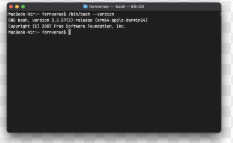
![]() Ethan
added to the journal ago
Ethan
added to the journal ago
MORE BUGS :(
Setting up Firebase and GitHub Pages to work together took a lot of trial and error. I started by creating a Firebase project and linking it to my Arduino using the Realtime Database REST API so it could send JSON-formatted CO₂ readings over HTTPS. One of the first major bugs I ran into was authentication errors — Firebase kept rejecting my POST requests until I adjusted the database rules to allow authenticated writes and formatted the URL correctly with the “.json” endpoint. Another issue came from HTTPS certificate mismatches when connecting from the Arduino Uno R4 WiFi, which required using the WiFiClientSecure library and updating the certificate fingerprint manually. On the front-end, I ran into CORS policy errors when fetching live data from Firebase in JavaScript, which I fixed by restructuring my fetch calls and enabling the proper Firebase web API configuration. Hosting on GitHub Pages introduced its own challenges: cached data wasn’t refreshing properly, so I had to add cache-busting query parameters to the Firebase fetch URLs and disable aggressive caching in the meta tags. I also fought through layout bugs when embedding the site in Google Sites and mobile browsers — charts would resize incorrectly or text would clip on smaller screens until I implemented CSS media queries, viewport scaling, and dynamic resizing with JavaScript. After several hours of debugging and cross-platform testing, the site finally rendered smoothly and updated in real time on all devices.
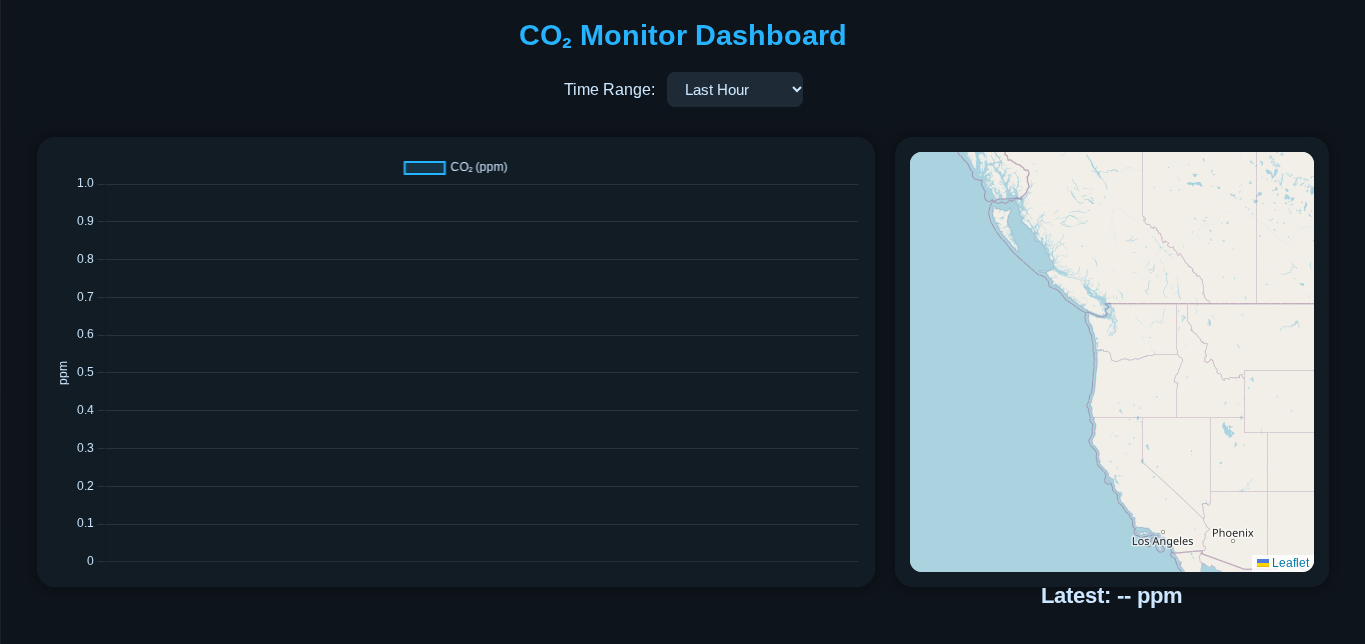
![]() Ethan
added to the journal ago
Ethan
added to the journal ago
web.app
To take the project beyond a local network webpage, I integrated Firebase and GitHub Pages to turn it into a true web app that could be accessed from anywhere. Using Firebase Realtime Database, I set up cloud data logging so that every CO₂ reading sent from the Arduino Uno R4 WiFi was stored with timestamps and could be fetched dynamically by the web interface. I then hosted the front-end files on GitHub Pages, allowing the same live data to be displayed from a clean, fast, and free hosting solution. A key part of this process was ensuring that the interface looked and worked great on all devices — I tested and optimized it for desktop, tablet, and mobile using responsive design principles and Firebase’s real-time updates to sync data instantly. This combination of cloud hosting, database integration, and open-source deployment made the system not only visually consistent but also scalable, so future sensors or dashboards can be added without changing the underlying infrastructure.


![]() Ethan
added to the journal ago
Ethan
added to the journal ago
Bug Squashing and Device Formatting
One of the most time-consuming yet rewarding parts of this project was refining the HTML interface for consistent display across all devices. I spent around five and a half hours debugging layout issues to make sure the live CO₂ readings, graph, and status indicators looked clean and readable on desktop, tablet, and mobile screens alike. This involved experimenting with responsive CSS, adjusting flexbox and grid layouts, fine-tuning font scaling, and testing in multiple browsers. At first, certain elements like the live graph or CO₂ value display would overlap or resize incorrectly on smaller screens, but after several iterations and media query adjustments, I achieved a responsive design that adapts smoothly to any format. The end result is a simple, functional, and professional-looking dashboard that can be viewed seamlessly from any device.
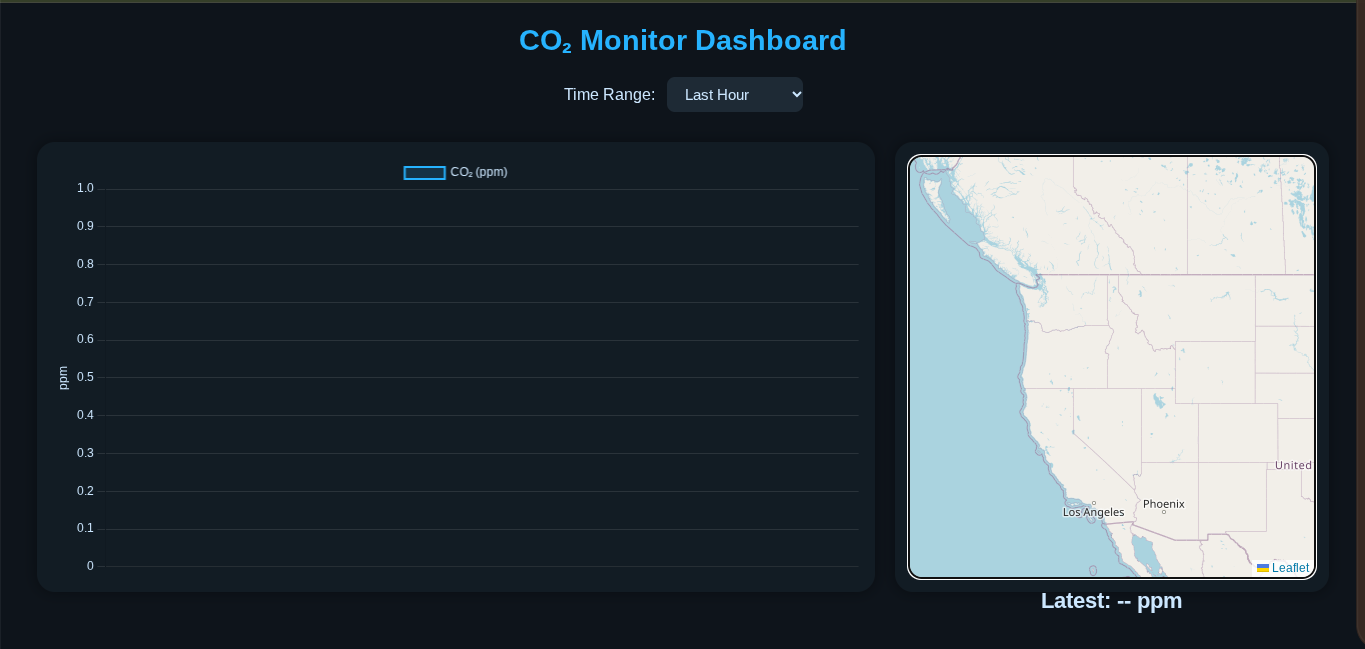
![]() Ethan
added to the journal ago
Ethan
added to the journal ago
Next Steps

'
| Task | Difficulty | Estimated Time | Benefit |
|---|---|---|---|
| Add real-time alerts (color changes or warnings when CO₂ exceeds thresholds) | Medium | 2–4 hours | Improves immediate safety awareness and visual feedback |
| Display longer-term trends (store more readings in Firebase and plot on a scrollable chart) | Medium | 3–5 hours | Provides historical context for CO₂ levels |
| Add averages, min/max, rate-of-change indicators | Medium | 2–3 hours | Gives more insight into air quality patterns |
| Implement error handling & auto-reconnect (Wi-Fi, sensor, Firebase failures) | High | 4–6 hours | Increases system reliability and reduces downtime |
| Optimize solar/power management (sleep modes, low-power updates) | Medium | 3–5 hours | Extends off-grid operation and efficiency |
| Make webpage mobile-friendly (responsive design for phones/tablets) | Low | 2–3 hours | Improves accessibility and user experience |
| Set up multi-sensor support (monitor multiple locations) | High | 6–8 hours | Expands project capability for spatial air quality monitoring |
| Add email/SMS alerts for high CO₂ levels | Medium | 3–5 hours | Provides automated notifications for critical conditions |
| Integrate additional sensors (temperature, humidity, VOC) | Medium | 4–6 hours | Creates a more comprehensive air quality monitoring system |
| Polish documentation (wiring diagrams, step-by-step guides, troubleshooting) | Low | 2–4 hours | Makes it easier for others to replicate and learn from the project |
| Public sharing / deployment (GitHub, personal portfolio, custom domain) | Low | 2–3 hours | Showcases the project and builds portfolio/credibility |
made it in HTML cuz I was bord in class
![]() Ethan
added to the journal ago
Ethan
added to the journal ago
NEXT STEPS
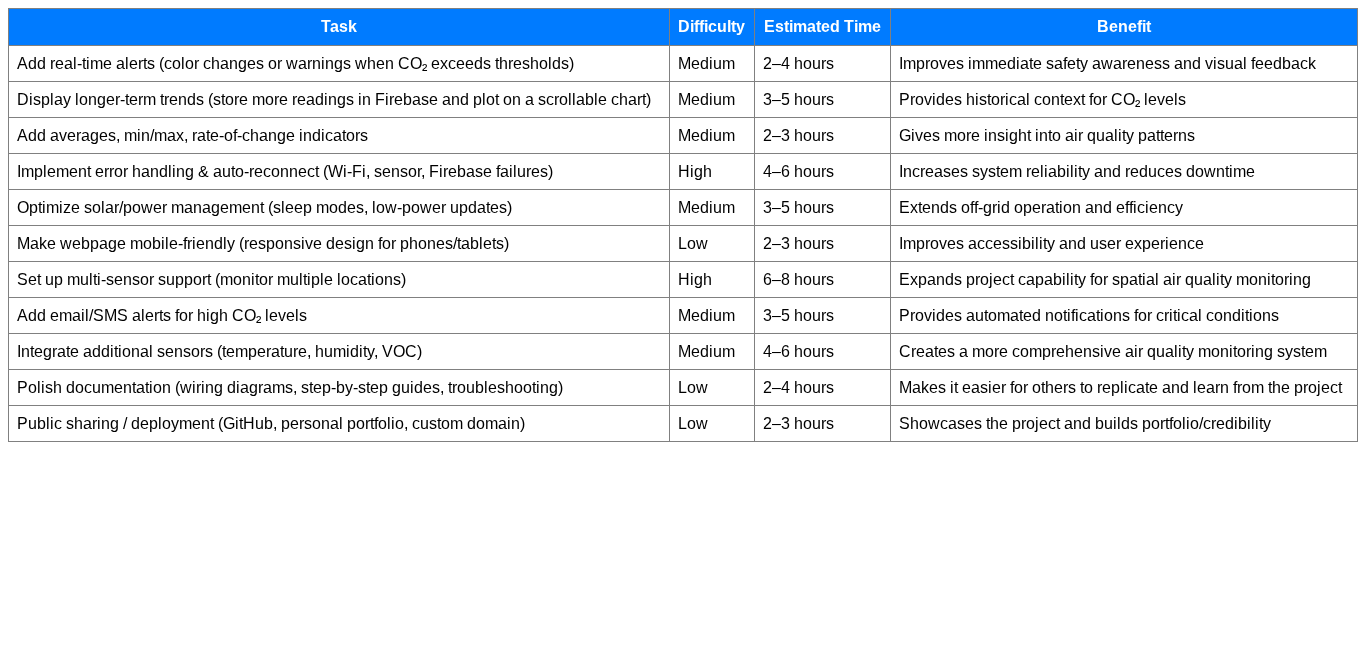
<table border="1" cellpadding="8" cellspacing="0" style="border-collapse: collapse; width: 100%; font-family: Arial, sans-serif;">
<thead style="background-color: #007BFF; color: white;">
<tr>
<th>Task</th>
<th>Difficulty</th>
<th>Estimated Time</th>
<th>Benefit</th>
</tr>
</thead>
<tbody>
<tr>
<td>Add real-time alerts (color changes or warnings when CO₂ exceeds thresholds)</td>
<td>Medium</td>
<td>2–4 hours</td>
<td>Improves immediate safety awareness and visual feedback</td>
</tr>
<tr>
<td>Display longer-term trends (store more readings in Firebase and plot on a scrollable chart)</td>
<td>Medium</td>
<td>3–5 hours</td>
<td>Provides historical context for CO₂ levels</td>
</tr>
<tr>
<td>Add averages, min/max, rate-of-change indicators</td>
<td>Medium</td>
<td>2–3 hours</td>
<td>Gives more insight into air quality patterns</td>
</tr>
<tr>
<td>Implement error handling & auto-reconnect (Wi-Fi, sensor, Firebase failures)</td>
<td>High</td>
<td>4–6 hours</td>
<td>Increases system reliability and reduces downtime</td>
</tr>
<tr>
<td>Optimize solar/power management (sleep modes, low-power updates)</td>
<td>Medium</td>
<td>3–5 hours</td>
<td>Extends off-grid operation and efficiency</td>
</tr>
<tr>
<td>Make webpage mobile-friendly (responsive design for phones/tablets)</td>
<td>Low</td>
<td>2–3 hours</td>
<td>Improves accessibility and user experience</td>
</tr>
<tr>
<td>Set up multi-sensor support (monitor multiple locations)</td>
<td>High</td>
<td>6–8 hours</td>
<td>Expands project capability for spatial air quality monitoring</td>
</tr>
<tr>
<td>Add email/SMS alerts for high CO₂ levels</td>
<td>Medium</td>
<td>3–5 hours</td>
<td>Provides automated notifications for critical conditions</td>
</tr>
<tr>
<td>Integrate additional sensors (temperature, humidity, VOC)</td>
<td>Medium</td>
<td>4–6 hours</td>
<td>Creates a more comprehensive air quality monitoring system</td>
</tr>
<tr>
<td>Polish documentation (wiring diagrams, step-by-step guides, troubleshooting)</td>
<td>Low</td>
<td>2–4 hours</td>
<td>Makes it easier for others to replicate and learn from the project</td>
</tr>
<tr>
<td>Public sharing / deployment (GitHub, personal portfolio, custom domain)</td>
<td>Low</td>
<td>2–3 hours</td>
<td>Showcases the project and builds portfolio/credibility</td>
</tr>
</tbody>
</table>
made it in HTML cuz I was bored in class
![]() Ethan
added to the journal ago
Ethan
added to the journal ago
RESERCHING
The first step in this project was researching the best way to measure CO₂ levels reliably and accurately. I spent a lot of time looking into different sensors, comparing ranges, accuracies, and communication protocols. After evaluating several options, I settled on the K30 CO₂ sensor because of its high measurement range up to 10,000 ppm and the availability of UART communication, which made it compatible with many microcontrollers. I also had to consider factors like power consumption and ease of integration, as I wanted the system to eventually run continuously on a small solar setup. This research phase was critical in defining the core components and capabilities of the project.
Next, I focused on choosing the right microcontroller board. Initially, I went with the ESP8266 due to its built-in Wi-Fi and low cost, thinking it would simplify the wireless data collection. However, as I started testing, I realized the ESP8266’s limited RAM and I/O flexibility could become a bottleneck when working with the K30 and handling additional features like cloud integration and real-time display. After weighing the pros and cons, I switched to the Arduino Uno R4 WiFi, which provided better reliability, more memory, and a familiar development environment while still including Wi-Fi capabilities. This decision required adjusting my wiring, code, and setup but ultimately made the system more stable.
Once the board was selected, I explored the Arduino Cloud IoT system and the Arduino Web Editor, thinking it would be a straightforward way to push data online. I spent time learning how to set up cloud dashboards, manage devices, and use Arduino’s built-in libraries to send CO₂ readings to the cloud. While the Arduino Cloud worked well for basic testing, I realized it was somewhat restrictive for a fully customized project and would increase long-term costs for public accessibility. After experimenting with it, I decided not to use Arduino Cloud for this project and instead chose Firebase as the data storage solution, which offered free, real-time, globally accessible data with much more flexibility.
The research and experimentation phase taught me a lot about microcontroller capabilities, cloud systems, and the trade-offs between cost, ease-of-use, and functionality. I learned not only about CO₂ sensors and wireless boards but also about choosing the right software tools for IoT projects, managing data streams, and understanding the limits of different platforms. Each decision—from selecting the sensor, testing multiple boards, and exploring cloud platforms—was informed by careful research and hands-on experimentation. This iterative process ensured that by the time I began coding the live web interface and embedding it on Google Sites, I had a solid foundation of knowledge to build a robust and accessible CO₂ monitoring system.
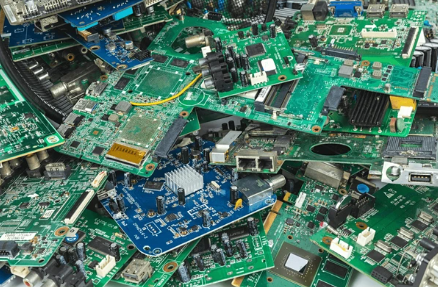
![]() Ethan
added to the journal ago
Ethan
added to the journal ago
HTML Embed In Google Sites
This part of the project focuses on creating a dynamic, web-based CO₂ monitor that displays live readings from the K30 sensor using Firebase as the backend. The Arduino continuously pushes CO₂ measurements, along with timestamps, to a Firebase Realtime Database, which allows for real-time updates anywhere with an internet connection. On the frontend, a custom HTML page embedded in Google Sites retrieves the latest data and displays it in two ways: a large numeric display showing the current CO₂ level and a live-updating line chart visualizing recent trends over time using Chart.js. This setup not only makes the data accessible globally without requiring local Wi-Fi but also provides a clear, interactive, and visually appealing way to monitor CO₂ levels in real time, all while keeping costs low through free tools.
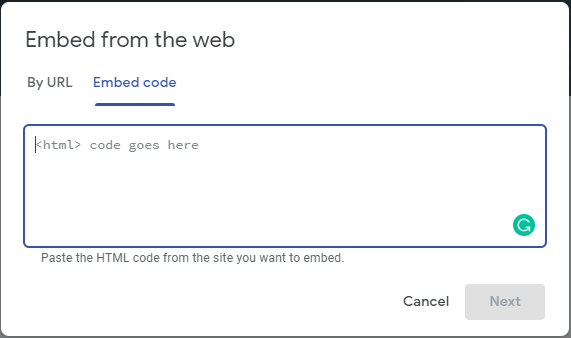
![]() Ethan
added to the journal ago
Ethan
added to the journal ago
Push The Data To Firebase and Next Steps
The next step in the project is to make the CO₂ readings from the K30 sensor on the Arduino Uno R4 WiFi accessible from anywhere by connecting the system to Firebase. We plan to have the Arduino push live CO₂ data to a Firebase Realtime Database or Firestore over Wi-Fi. This setup allows us to store readings securely in the cloud, so they are accessible from any device with an internet connection. Using Firebase also gives us built-in tools for authentication, security rules, and real-time updates, which makes it easier to manage and protect the data while keeping the system scalable.
Once the data is live in Firebase, we will create a custom HTML page that pulls the CO₂ readings and updates dynamically using Firebase’s JavaScript SDK. To keep costs low and simplify hosting, we’ll embed this page into Google Sites, which provides a free, easy-to-use platform for sharing our live data. The HTML page can display the CO₂ levels in real-time using charts or numeric displays, and it will update automatically without needing a page refresh. This approach allows anyone with the link to view the readings from any device, effectively turning our local CO₂ monitor into a globally accessible, low-cost monitoring system.
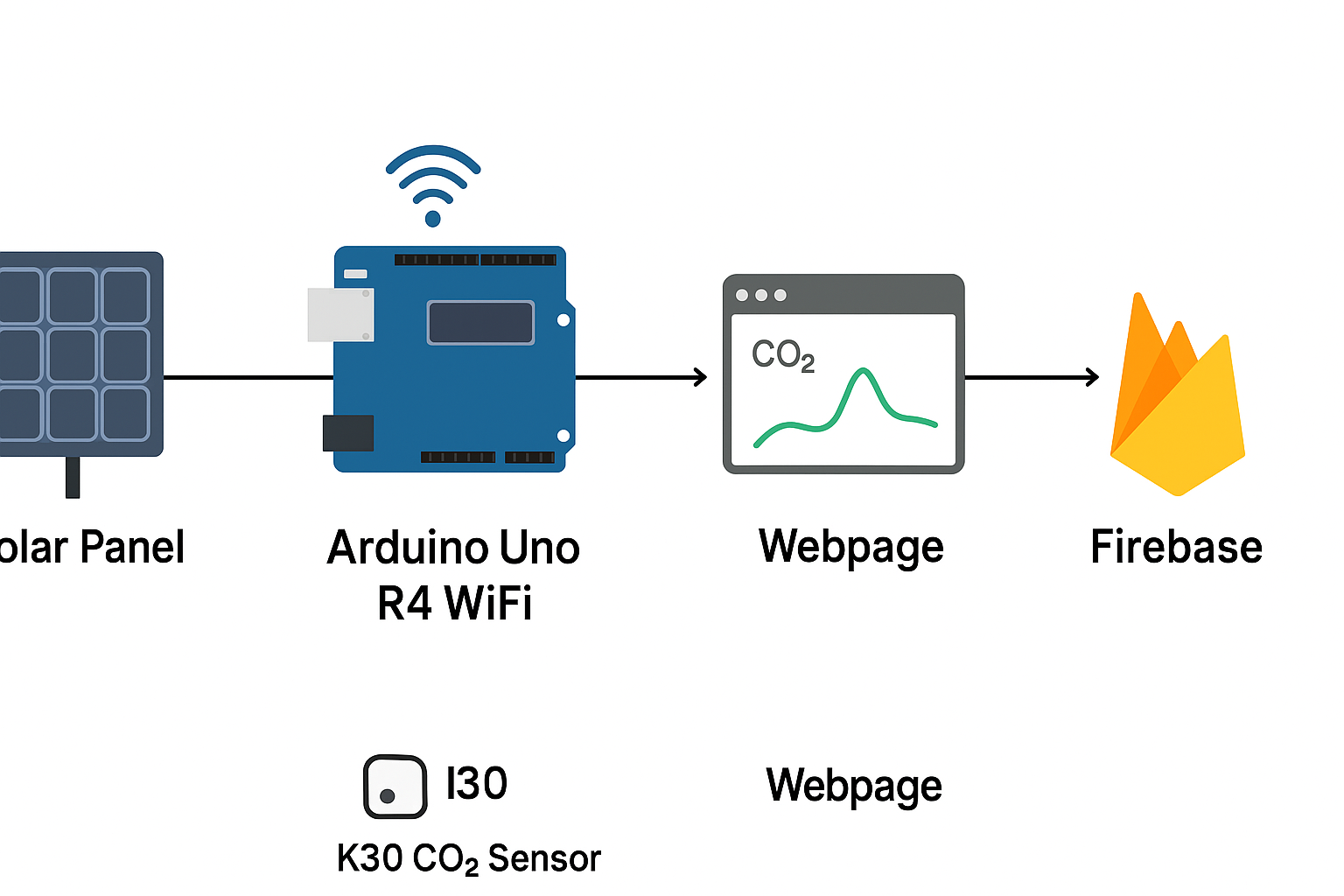
![]() Ethan
added to the journal ago
Ethan
added to the journal ago
Live Data To Firebase
In this project, the Arduino Uno R4 WiFi reads real-time CO₂ levels from the K30 sensor via UART and initially displayed the data on a live-updating webpage hosted directly from the Arduino. The webpage used Chart.js to plot CO₂ readings over time, allowing wireless monitoring from any device on the same network. While this method was convenient for local visualization, it had limitations: data was only available while connected to the Arduino’s network, and historical readings could not be easily stored or analyzed. To improve this, the project was enhanced by sending CO₂ readings, along with timestamps, to a Firebase Realtime Database using HTTPS. This approach provides cloud-based logging, enabling secure remote access to historical data, long-term storage, and potential integration with analytics or dashboards. By combining live visualization with cloud logging, the system now offers both instant monitoring and persistent, accessible data for analysis over time.
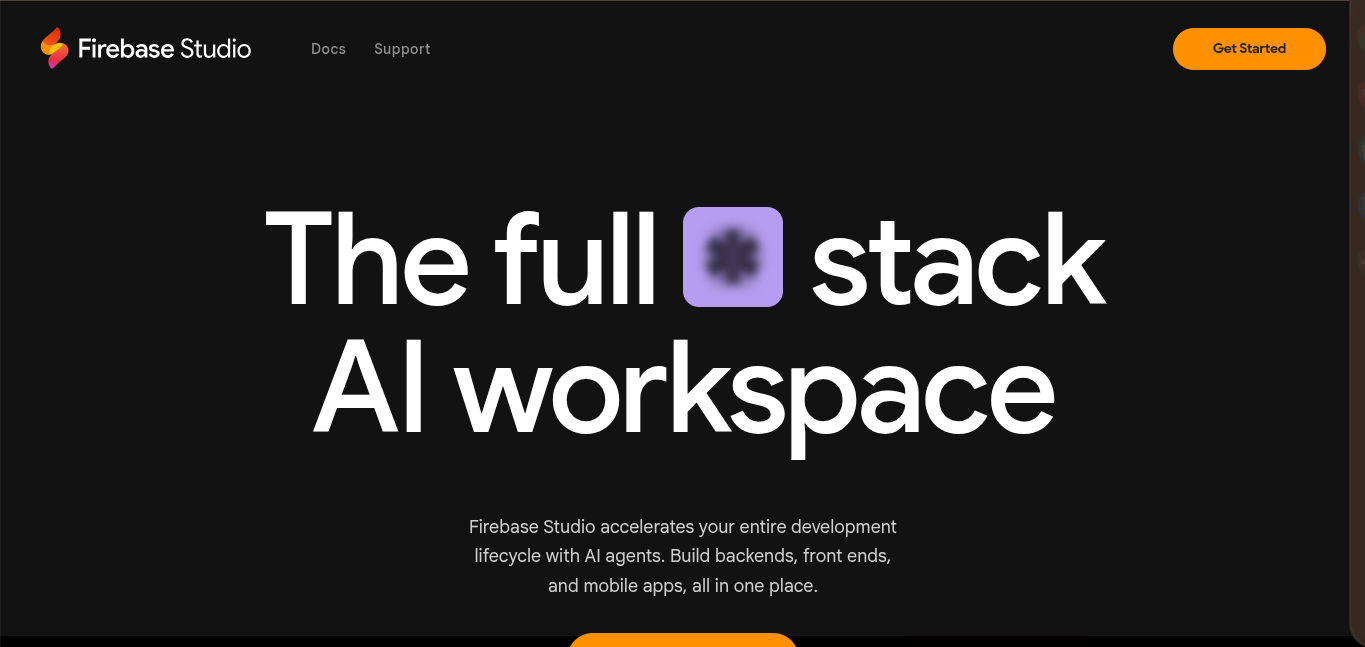
![]() Ethan
added to the journal ago
Ethan
added to the journal ago
Web Server with Arduino UNO R4 Wifi
I used the Arduino Uno R4 WiFi’s built-in Wi-Fi capabilities to create a local web server that displayed live CO₂ data. After connecting the Arduino to a Wi-Fi network, I programmed it to serve an HTML webpage accessible via its IP address. The webpage dynamically updated with the latest CO₂ readings received from the K30 sensor, allowing real-time monitoring through any browser on the same network. This made the system fully wireless—no USB connection was required to view the data. However, the limitation was that the webpage could only be accessed by devices connected to the same Wi-Fi network as the Arduino and the Arduino required a constant supply of power from a power bank.
EXAMPLE HTML AND PHOTO ONLY. DOES NOT DIPLAY REAL DATA
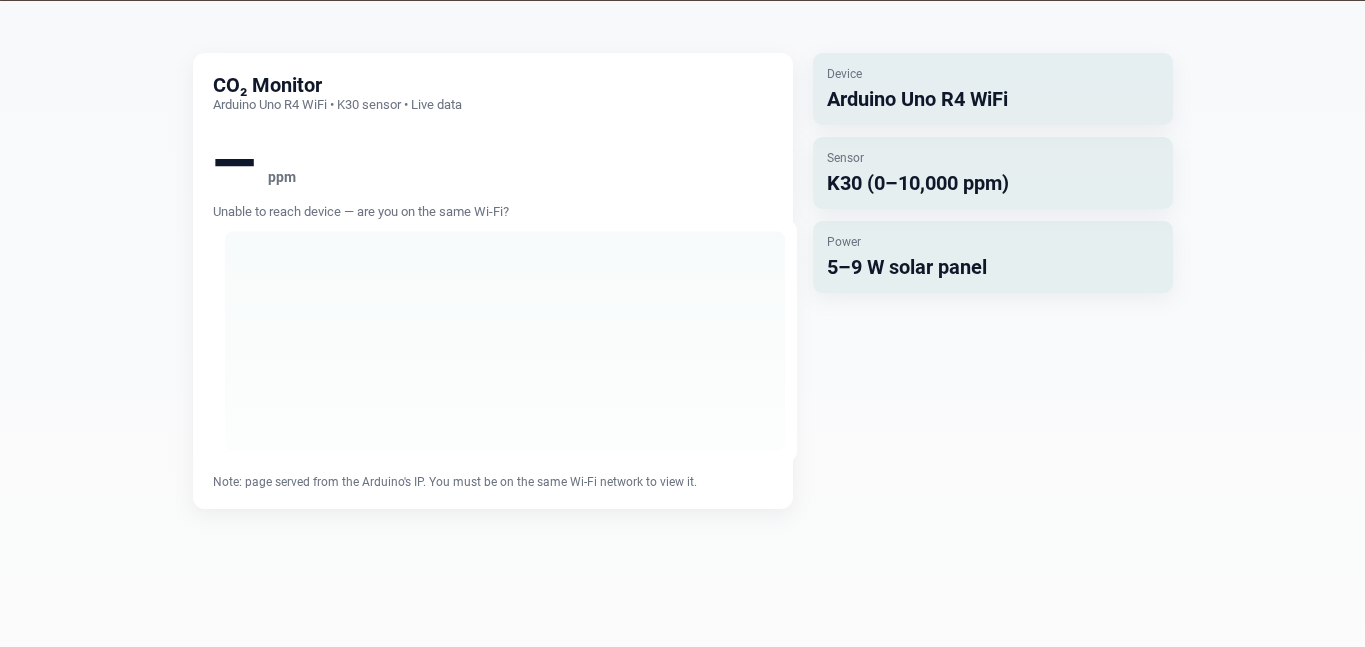
`<!doctype html>
CO₂ Monitor — Arduino Uno R4 WiFi
<br>
:root{<br>
--bg: #fbfbfb;<br>
--card: #ffffff;<br>
--muted: #6b7280;<br>
--accent: #0f766e;<br>
--danger: #b91c1c;<br>
--glass: rgba(15,118,110,0.08);<br>
font-family: Inter, system-ui, -apple-system, "Segoe UI", Roboto, "Helvetica Neue", Arial;<br>
}<br>
html,body{height:100%;margin:0;background:linear-gradient(180deg,#f7f9fb,var(--bg));}<br>
.wrap{<br>
max-width:980px;<br>
margin:28px auto;<br>
padding:24px;<br>
display:grid;<br>
grid-template-columns: 1fr 360px;<br>
gap:20px;<br>
align-items:start;<br>
}<br>
.card{<br>
background:var(--card);<br>
border-radius:12px;<br>
box-shadow:0 6px 20px rgba(16,24,40,0.06);<br>
padding:20px;<br>
}<br>
.header{<br>
display:flex;<br>
gap:16px;<br>
align-items:center;<br>
}<br>
.title{<br>
font-size:20px;<br>
font-weight:700;<br>
color:#0f172a;<br>
}<br>
.subtitle{color:var(--muted);font-size:13px}<br>
.big-readout{<br>
margin-top:18px;<br>
display:flex;<br>
align-items:baseline;<br>
gap:14px;<br>
}<br>
.ppm{<br>
font-size:56px;<br>
font-weight:800;<br>
color:#0f172a;<br>
letter-spacing:-1px;<br>
}<br>
.unit{<br>
color:var(--muted);<br>
font-weight:600;<br>
font-size:14px;<br>
}<br>
.meta { margin-top:8px; color:var(--muted); font-size:13px }<br>
.graph-wrap{ width:100%; height:220px; margin-top:18px; }<br>
canvas{ width:100%; height:100%; display:block; border-radius:8px; background:linear-gradient(180deg, rgba(15,118,110,0.03), rgba(15,118,110,0.01)); box-shadow: inset 0 1px 0 rgba(255,255,255,0.5);}<br>
.side{<br>
display:flex;<br>
flex-direction:column;<br>
gap:12px;<br>
}<br>
.stat{<br>
padding:14px;<br>
border-radius:10px;<br>
background:var(--glass);<br>
display:flex;<br>
flex-direction:column;<br>
gap:6px;<br>
}<br>
.stat .label{font-size:12px;color:var(--muted)}<br>
.stat .value{font-weight:700;font-size:20px;color:#0f172a}<br>
.footer-note{font-size:12px;color:var(--muted);margin-top:12px}<br>
@media (max-width:880px){<br>
.wrap{grid-template-columns:1fr; padding:16px}<br>
.side{flex-direction:row; gap:10px}<br>
.side .stat{flex:1}<br>
}<br>
<div class="big-readout" aria-live="polite">
<div class="ppm" id="co2Value">—</div>
<div class="unit">ppm</div>
</div>
<div class="meta" id="lastSeen">waiting for data…</div>
<div class="graph-wrap card" style="margin:0; padding:12px; box-shadow:none;">
<canvas id="chart" width="600" height="220" role="img" aria-label="CO2 trend chart"></canvas>
</div>
<div class="footer-note">Note: page served from the Arduino's IP. You must be on the same Wi-Fi network to view it.</div>
</section>
<aside class="side"><div class="stat card">
<div class="label">Device</div>
<div class="value">Arduino Uno R4 WiFi</div>
</div>
<div class="stat card">
<div class="label">Sensor</div>
<div class="value">K30 (0–10,000 ppm)</div>
</div>
<div class="stat card">
<div class="label">Power</div>
<div class="value">5–9 W solar panel</div>
</div>
<br>
// Configuration: endpoint the Arduino serves. Adjust if your sketch uses a different route.<br>
const ENDPOINT = '/co2'; // e.g. <a href="http://192.168.1.53/co2" target="_blank" rel="nofollow noopener">http://192.168.1.53/co2</a> when testing from another device<br>
const POLL<em>INTERVAL = 5000; // ms<br>
const MAX</em>POINTS = 60; // number of points shown in chart</p>
<pre><code class="prettyprint">// DOM
const co2El = document.getElementById('co2Value');
const lastSeenEl = document.getElementById('lastSeen');
const canvas = document.getElementById('chart');
const ctx = canvas.getContext('2d');
// Data store
let readings = []; // {t:timestamp, v:value}
// Helpers
function isoTime(ts=Date.now()){
return new Date(ts).toLocaleTimeString();
}
async function fetchCO2(){
try{
const res = await fetch(ENDPOINT, {cache:'no-store'});
if(!res.ok) throw new Error('HTTP ' + res.status);
const data = await res.json();
// expect {co2: 415} or {"co2": 415}
const value = Number(data.co2 ?? data.co2_ppm ?? data.value);
if(Number.isFinite(value)){
pushReading(value);
updateUI(value);
} else {
console.warn('Unexpected payload', data);
lastSeenEl.textContent = 'Unexpected response from device';
}
} catch(err){
console.error('Fetch failed', err);
lastSeenEl.textContent = 'Unable to reach device — are you on the same Wi-Fi?';
}
}
function pushReading(v){
readings.push({t:Date.now(), v: Math.round(v)});
if(readings.length > MAX_POINTS) readings.shift();
drawChart();
}
function updateUI(v){
co2El.textContent = Math.round(v);
lastSeenEl.textContent = `Last update: ${isoTime()}`;
}
// Simple line chart drawn on canvas
function drawChart(){
const W = canvas.width = canvas.clientWidth * devicePixelRatio;
const H = canvas.height = canvas.clientHeight * devicePixelRatio;
ctx.clearRect(0,0,W,H);
if(readings.length === 0) {
// placeholder grid
drawGrid(W,H);
ctx.fillStyle = '#7c8a93';
ctx.font = `${12*devicePixelRatio}px sans-serif`;
ctx.fillText('No data yet', W/2 - 30*devicePixelRatio, H/2);
return;
}
// compute min/max with some padding
const values = readings.map(r => r.v);
let min = Math.min(...values);
let max = Math.max(...values);
if (min === max) { min = Math.max(0, min - 50); max = max + 50; }
const padding = 0.08 * (max - min);
min = min - padding; max = max + padding;
drawGrid(W,H, min, max);
// coords
const left = 8*devicePixelRatio;
const right = W - 8*devicePixelRatio;
const top = 8*devicePixelRatio;
const bottom = H - 20*devicePixelRatio;
const width = right - left;
const height = bottom - top;
ctx.lineWidth = 2*devicePixelRatio;
ctx.lineJoin = 'round';
ctx.lineCap = 'round';
ctx.beginPath();
readings.forEach((pt, i) => {
const x = left + (i / Math.max(1, readings.length-1)) * width;
const y = top + ((max - pt.v) / (max - min)) * height;
if(i===0) ctx.moveTo(x,y); else ctx.lineTo(x,y);
});
ctx.strokeStyle = '#0f766e';
ctx.stroke();
// fill under curve
ctx.lineTo(right, bottom);
ctx.lineTo(left, bottom);
ctx.closePath();
ctx.fillStyle = 'rgba(15,118,110,0.08)';
ctx.fill();
// right-side current value label
const last = readings[readings.length-1];
const lastX = left + (readings.length-1) / Math.max(1, readings.length-1) * width;
const lastY = top + ((max - last.v) / (max - min)) * height;
ctx.fillStyle = '#0f172a';
ctx.font = `${12*devicePixelRatio}px sans-serif`;
ctx.fillText(`${last.v} ppm`, Math.min(lastX + 8*devicePixelRatio, right - 60*devicePixelRatio), lastY - 6*devicePixelRatio);
}
function drawGrid(W,H, min=0, max=1000){
// light background and horizontal ticks
ctx.fillStyle = 'rgba(255,255,255,0.0)';
ctx.fillRect(0,0,W,H);
ctx.strokeStyle = 'rgba(15,23,42,0.06)';
ctx.lineWidth = 1 * devicePixelRatio;
const ticks = 4;
for(let i=0;i<=ticks;i++){
const y = (i/ticks) * (H - 32*devicePixelRatio) + 8*devicePixelRatio;
ctx.beginPath();
ctx.moveTo(8*devicePixelRatio, y);
ctx.lineTo(W - 8*devicePixelRatio, y);
ctx.stroke();
// label
const value = Math.round(max - (i/ticks)*(max-min));
ctx.fillStyle = 'rgba(15,23,42,0.45)';
ctx.font = `${11*devicePixelRatio}px sans-serif`;
ctx.fillText(String(value), 10*devicePixelRatio, y - 4*devicePixelRatio);
}
}
// Kick off
fetchCO2(); // initial
setInterval(fetchCO2, POLL_INTERVAL);
// For demos where you don't have an Arduino handy,
// uncomment the block below to simulate readings:
/*
setInterval(()=> {
const sim = 380 + Math.round(80*Math.sin(Date.now()/60000) + Math.random()*30);
pushReading(sim);
updateUI(sim);
}, 2000);
*/
</code></pre>
<p>
`
![]() Ethan
added to the journal ago
Ethan
added to the journal ago
Custom HTML Page with Arduino Web page
To connect the Arduino Uno R4 WiFi to the K30 CO₂ sensor, I used a UART (serial) communication setup. The K30’s TX pin was connected to the Arduino’s RX pin (12), and the K30’s RX pin to the Arduino’s TX pin (13), the K30 ground connected to the Arduino ground, and the K30 VCC connected to the Arduino 5V (when using a Arduino uno R3 or some other boards you may need an external power supply). Using the Arduino’s hardware serial interface, I wrote a simple sketch to request CO₂ concentration data from the sensor and display the live readings on the Serial Monitor. This allowed real-time monitoring of CO₂ levels directly through the Arduino IDE, ensuring reliable data exchange between the sensor and microcontroller.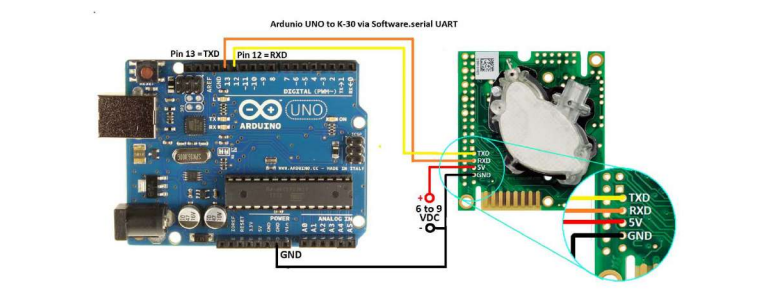
![]() Ethan
started CO2 Monitor ago
Ethan
started CO2 Monitor ago